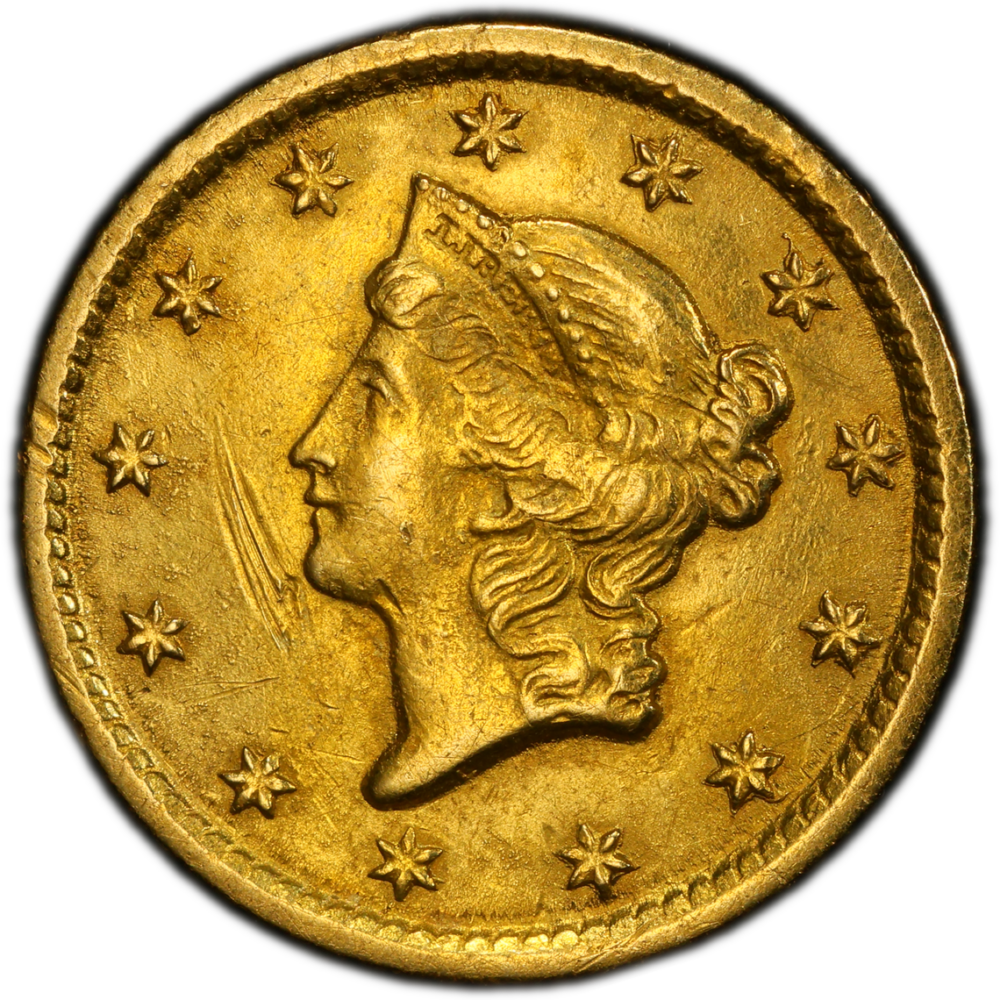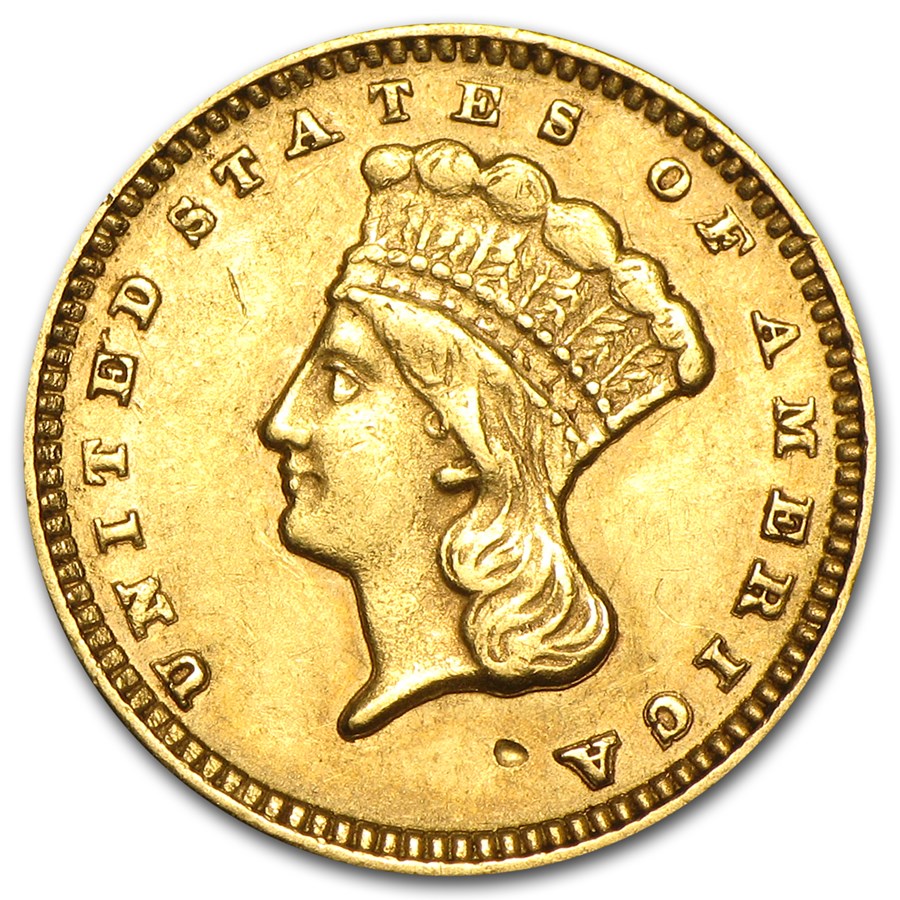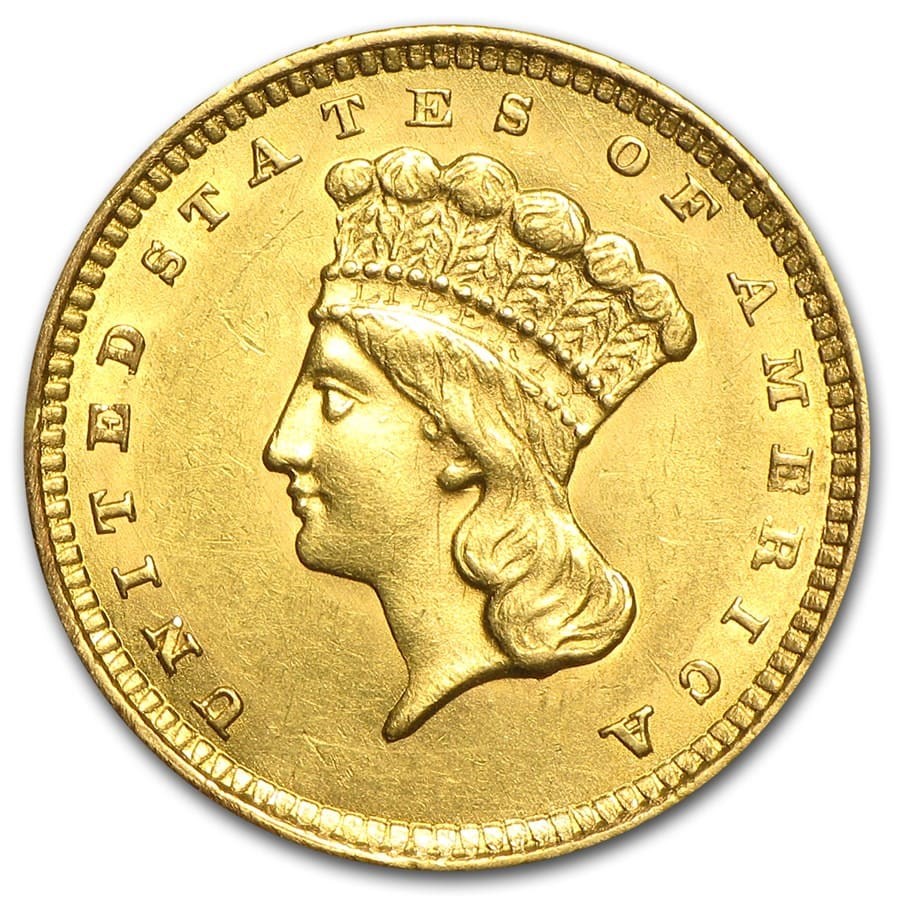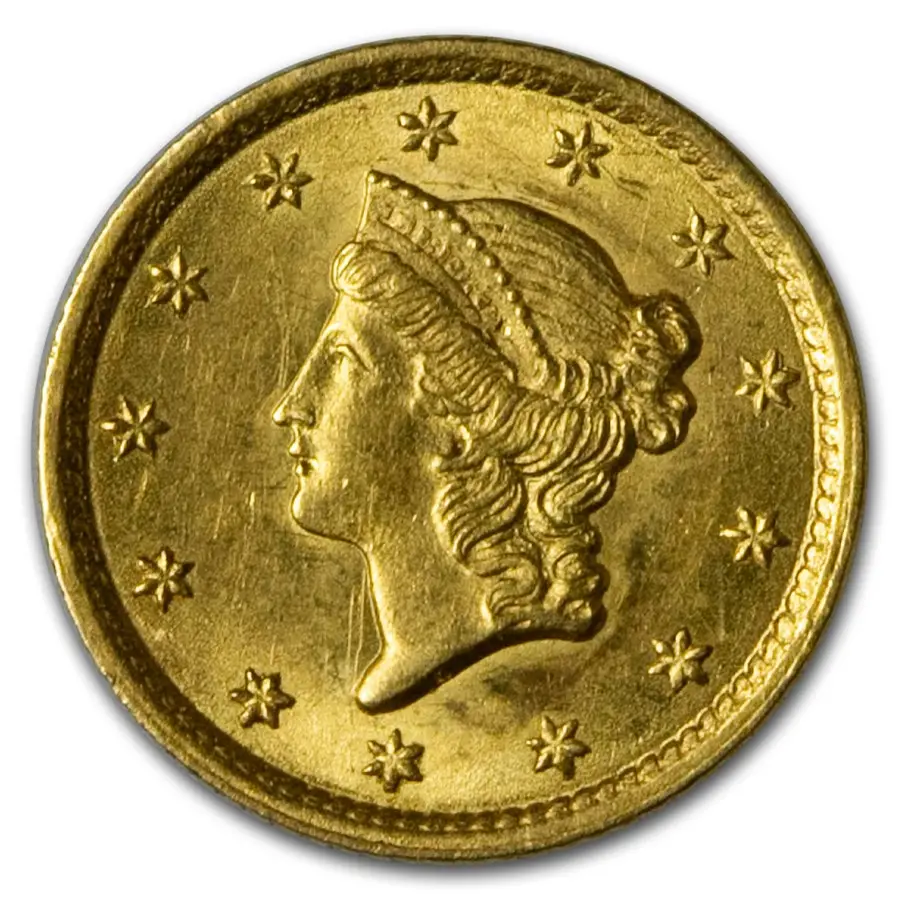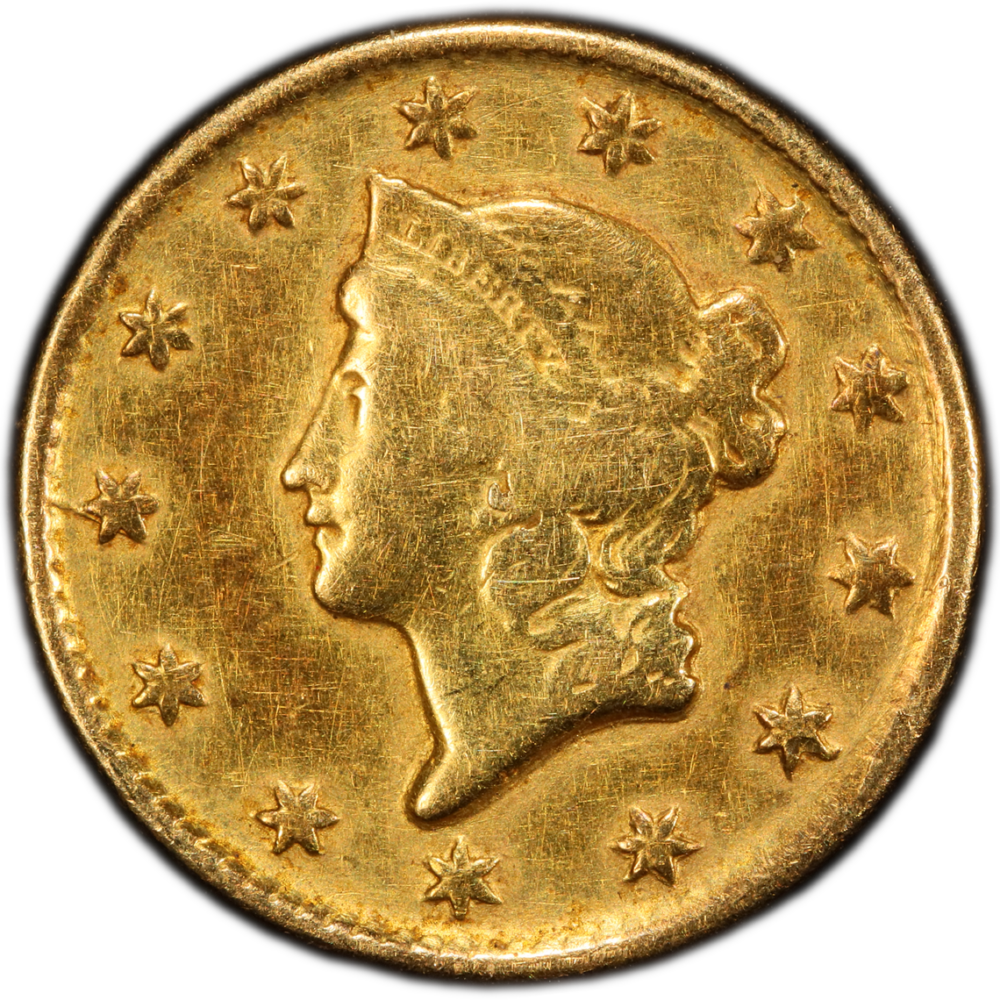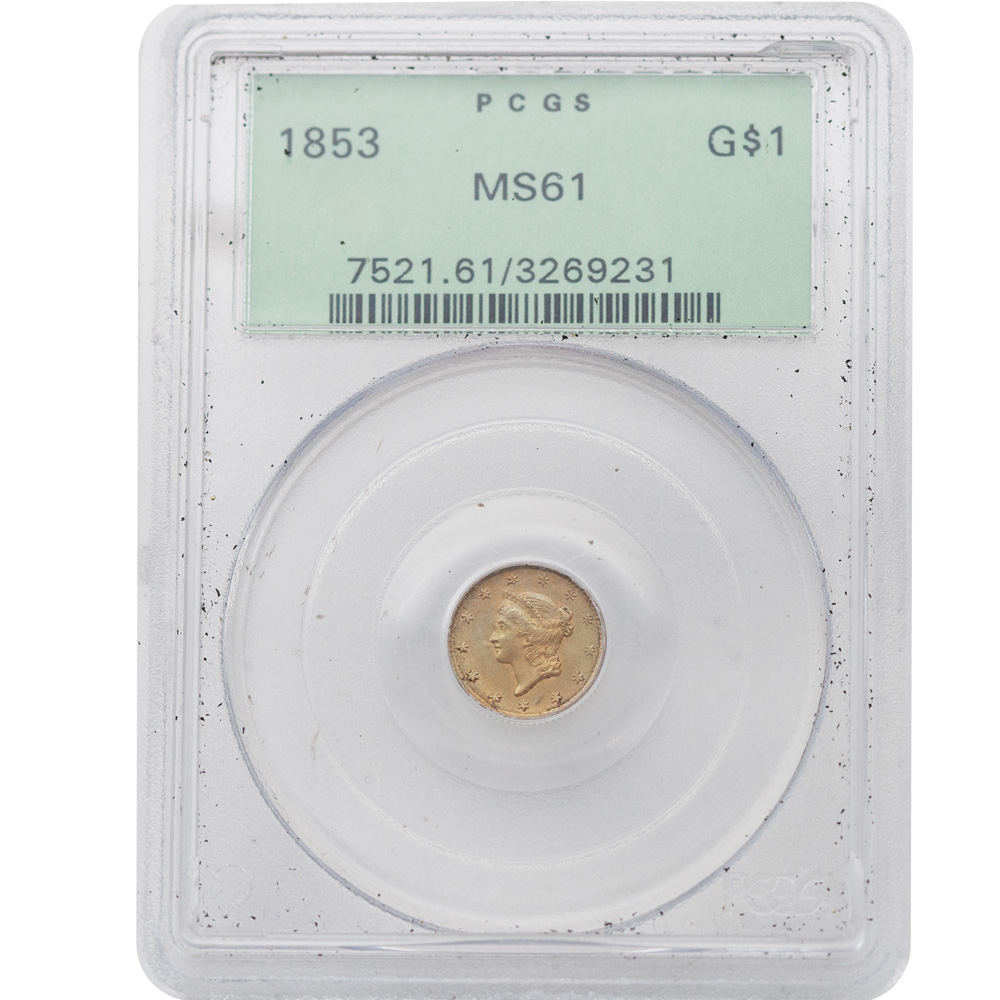$1 Gold Dollars (1849–1889)
The U.S. Gold Dollar was the smallest denomination gold coin ever struck by the United States Mint, both in size and face value. Issued between 1849 and 1889, these coins reflect an important chapter in American coinage and remain highly collectible today.
Historical Background
-
Authorized by the Act of March 3, 1849, the $1 Gold Dollar was created largely in response to the influx of gold from the California Gold Rush.
-
These coins were minted for circulation but were never widely used in everyday commerce because of their tiny size and tendency to be easily lost.
-
The series was discontinued in 1889, partly due to low demand and practicality issues.
Design Types
There are three main design types, all designed by James B. Longacre:
-
Type 1 (Liberty Head, 1849–1854)
-
Smallest U.S. coin ever struck (only 13 mm).
-
Obverse: Liberty head with coronet inscribed LIBERTY.
-
Reverse: Wreath enclosing denomination and date.
-
-
Type 2 (Indian Princess Head, Small Head, 1854–1856)
-
Diameter increased to 15 mm.
-
Obverse: Small portrait of Liberty wearing a Native American feather headdress.
-
Reverse: Wreath with denomination and date.
-
Known for weak strikes, making fully struck examples scarce.
-
-
Type 3 (Indian Princess Head, Large Head, 1856–1889)
-
Same general design as Type 2 but with a larger portrait to correct strike problems.
-
Longest-running design in the series.
-
Specifications
-
Composition: .900 fine gold, .100 copper
-
Weight: 1.672 grams
-
Actual Gold Weight (AGW): 0.04837 troy oz
-
Diameter: 13 mm (Type 1), 15 mm (Types 2 & 3)
-
Edge: Reeded
Mints Involved
-
Philadelphia (no mintmark) – most issues.
-
Charlotte (C), Dahlonega (D), New Orleans (O), San Francisco (S) – produced scarcer issues, particularly prized by collectors.
-
Branch mint issues are highly sought after, especially from Charlotte and Dahlonega (both closed in 1861).
Key Dates & Rarities
-
Type 1: 1849-C, 1849-D, 1850-D
-
Type 2: 1855-C, 1855-D
-
Type 3: 1861-D (extremely rare, struck during the Civil War under Confederate control)
-
Later dates (1870s–1880s) often had low mintages, making them scarcer.


